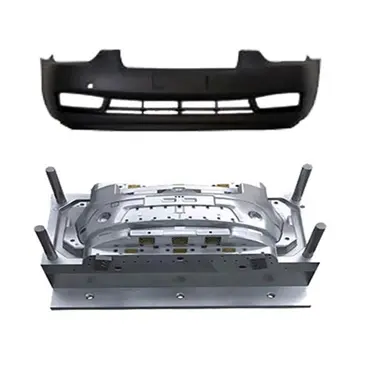As the automotive industry embraces the future—electrification, sustainability, lightweight design, and cost-efficiency—Plastic Automotive Parts have become more than just alternatives to metal. They are now a strategic component in building safer, lighter, and smarter vehicles.
From under-the-hood components to exterior panels and interior trims, high-performance Plastic Automotive Parts are transforming the way vehicles are designed and manufactured. Our company delivers customized plastic solutions tailored to the unique requirements of modern automakers and Tier 1 auto plastic component suppliers.
Why Use Plastics in Automotive Manufacturing
Lightweighting for Performance and Efficiency
Plastic parts are significantly lighter than metal, reducing overall vehicle weight by up to 50 percent in some applications. Lighter vehicles improve fuel economy, reduce emissions, and extend the range of electric vehicles. In the EV era, lightweight plastic components are not optional—they are essential.
Design Flexibility and Part Integration
Plastic enables complex geometries that would be difficult or costly with metal. It supports the integration of multiple functionalities into a single part, reducing part count, simplifying assembly, and lowering production costs. From hidden clips to seamless curves, plastics unlock new design possibilities.
Exceptional Durability and Resistance
High-performance plastics offer outstanding chemical resistance, thermal stability, and impact strength. Whether facing engine heat, UV exposure, or mechanical stress, engineered plastics can endure harsh automotive environments while maintaining structural integrity and appearance.
Lower Manufacturing Costs
Plastics can be mass-produced through injection molding, extrusion, or blow molding, offering faster production cycles, less energy use, and reduced material waste compared to metalworking processes. This translates to better margins for manufacturers and more competitive pricing.
Environmental Responsibility
Modern plastics are increasingly recyclable or bio-based, making them part of the solution for greener vehicles. By reducing vehicle weight and improving recyclability, plastic components help manufacturers comply with stringent environmental regulations such as the EU's End-of-Life Vehicle Directive and corporate sustainability goals.
Common Types of Plastics Used in Automotive Parts
Tailored for Performance, Precision, and Longevity
Plastic Type | Typical Applications | Key Properties |
PP (Polypropylene) | Bumpers, battery casings, interior trims | Lightweight, excellent chemical resistance, cost-effective |
ABS (Acrylonitrile Butadiene Styrene) | Dashboards, interior panels, consoles | Impact-resistant, easy to mold, great surface finish |
PA (Nylon / Polyamide) | Engine covers, gears, radiator end tanks | High mechanical strength, heat resistance, wear resistance |
PC (Polycarbonate) | Headlamp lenses, sunroofs, instrument clusters | Transparent, extremely tough, heat- and impact-resistant |
POM (Polyoxymethylene / Acetal) | Fuel system components, locks, hinges | High dimensional stability, low friction, excellent wear |
PET (Polyethylene Terephthalate) | Connectors, sensor housings, underhood components | Strong, stable under heat and humidity |
PU (Polyurethane) | Seat cushions, insulation, gaskets | Flexible or rigid, great energy absorption and comfort |
Each of these materials is chosen for its ability to deliver reliability, safety, and cost-effectiveness—whether in exterior components exposed to UV and weather, or in critical interior and under-the-hood applications.
How to Select the Right Plastic for Automotive Parts
Strategic Material Selection for High-Performance Applications
Choosing the correct plastic for a specific automotive component is a crucial design decision. It impacts performance, cost, safety, and longevity. Here's what to consider:
Functional Requirements
Does the part require strength, flexibility, heat resistance, or chemical resistance? Load-bearing components might require reinforced PA or PBT, while decorative parts may prioritize finish and color consistency.
Operating Environment
Will the part be exposed to high temperatures, moisture, chemicals, or UV radiation? Under-the-hood parts need materials with high thermal stability and resistance to oils and fuels.
Manufacturing Process
Is the part suitable for injection molding, extrusion, or blow molding? Some plastics flow better in molds, while others maintain strength post-processing.
Surface and Aesthetic Demands
Does the component require paintability, gloss finish, texture, or color matching? For visible parts, materials like ABS and PC/ABS blends offer excellent cosmetic properties.
Compliance and Sustainability
Does the material meet industry standards and regulations (ROHS, REACH, TS16949)? Is the plastic recyclable or available in bio-based options to align with ESG goals?
Our team works closely with automotive engineers and procurement teams to ensure material choices align with product goals, production efficiency, and global compliance standards.
Choose the Right Plastic, Build the Best Car
Custom Automotive Plastic Solutions That Drive Performance
Our plastic components are trusted by OEMs and Tier 1 suppliers worldwide. We provide more than just raw materials—we deliver end-to-end solutions that include:
Custom Formulations
Reinforced plastics, flame-retardant grades, UV-stabilized materials, high-temperature blends
Prototyping and Tooling Support
Rapid prototyping, mold flow analysis, precision tooling for injection molding
Testing and Validation
Physical, thermal, and chemical performance testing to meet automotive quality benchmarks
Global Supply and Scalability
Short lead times, high-volume production, international logistics support
Whether you need durable engine bay components, precision interior parts, or eco-friendly alternatives, we offer tailored solutions that ensure consistency, durability, and cost-effectiveness.
Partner with Us for Premium Plastic Car Components
Your Trusted Automotive Plastics Expert
We are more than a supplier—we are a collaborative engineering partner in your product development journey. From concept to production, our technical expertise and global resources ensure you always receive the right material for the right application.
Industries Served:
Passenger Vehicles
Electric and Hybrid Vehicles
Commercial Trucks
Agricultural and Off-Highway Vehicles
Contact Us Today for Samples, Quotes, or Technical Consultation
Website: sungplastic.com
Let us help you shape the future of mobility with lightweight, durable, and innovative plastic components.
